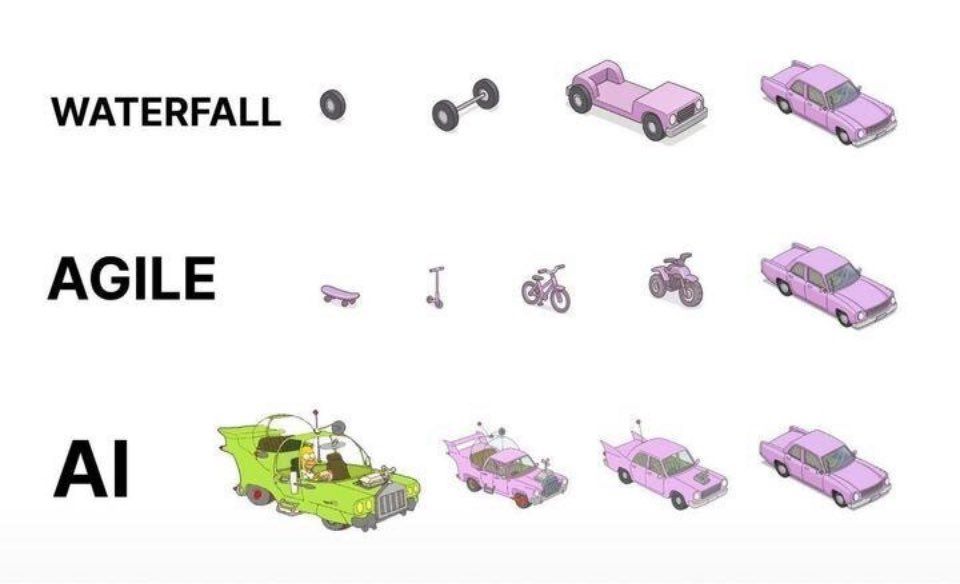Everyone’s having a good laugh at this image going around Twitter:

But I think it’s actually a surprisingly useful way of thinking about AI: Not as a technology but as a product methodology. A rocket-powered onion peeler.
Go with me here a minute.
There’s an old joke: "How do you carve a statue of an elephant? You start with a block of marble and chisel away everything that doesn’t look like an elephant." LLMs operate sort of the same way. Instead of starting with a blank page, you start with a block of marble shaped like all-of-human-knowledge and use prompts to chisel away everything that isn’t what you want. This reframes AI not as a generative method—after all, it's just other people's content fed into a bunch of fancy math—but as a tool for winnowing raw material down into the thing you want. Every time you refine a query, you're chopping a little bit more marble off the block.
I think this is a useful frame for product thinking, because it’s closer to how product definition often works in the real world: We're not conjuring features out of thin air, we're filtering down a big pool of possibilities to land on what actually works.
Steve Jobs once said:
When you first start off trying to solve a problem, the first solutions you come up with are very complex, and most people stop there. But if you keep going, and live with the problem and peel more layers of the onion off, you can often arrive at some very elegant and simple solutions. Most people just don’t put in the time or energy to get there.
Great products often come from removing not adding. Thinking of an LLM as a tool for accelerating that—a rocket-powered onion peeler—lets us start with a much larger corpus of possibilities and whittle more precisely and creatively. Could it replace Agile the way Agile has "replaced" waterfall, or at least sit alongside it? Who knows. But I'd love to see someone actually build a delivery methodology around it. Is this a useful idea, or am I just sniffing marble dust?
(For avoidance of doubt, the —es are mine. I was using emdashes long before ChatGPT was.)
This post was originally published on LinkedIn. Image credit: Jason Liu, @jxnlco on Twitter.